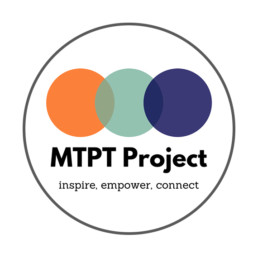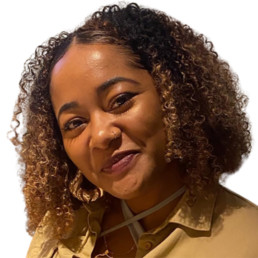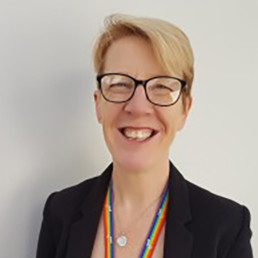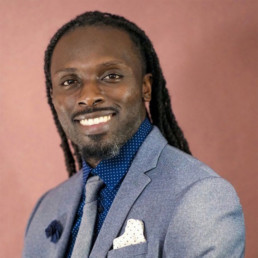The Diversifying the Curriculum Conference 2025

Written by Bennie Kara
Co-Founder of Diverse Educators
At Diverse Educators’ Diversifying the Curriculum Conference, Hannah Wilson started the event by reminding us all that the work on ensuring curriculum is deep, broad and diverse is not done yet. Our speakers certainly reminded us just how much we can do to make sure that we are constructing a curriculum for all.
Christine Counsell’s opening keynote was joyful to listen to, not least in part due to her incredible depth of awareness and knowledge about the humanities curriculum. She connected effective learning to effective curriculum design and spoke about how thoroughness is possible and how thin unconnected content does not serve the needs of our children. She reminded us that the humanities are replete with story and that each lesson should have children longing for the next one. In her keynote, she recognised the need to work hard to deliver unfamiliar content but also how that hard work pays off when students have experienced language, symbols and narratives repeatedly throughout the curriculum from year 3 onwards in her words meaning comes from relationships with everything else and that the curriculum should be a series of constant bursts of energy fueled by indirect residents and anticipation.
In Emily Folurunsho’s session, we were treated to an in-depth look at Black British history and how important it is to ensure that British students learn about Black British history and not just the history of Black Americans. She was clear in her message that the first time that students encounter a black figure from history should not be through the lens of enslavement. She talked us through three themes that allow us as educators to give a fuller picture of Black British history as possible. She talked about figures from the pre-Anglo-Saxon past, from the Tudor age and from the Victorian age. It is important, she said, that we study Windrush and its legacy, but that we also contextualise Windrush in light of broader race relations in the mid 20th century. She talked compellingly about how Black British history has a connecting influence in terms of providing representation and presence for black students, touching on her own history in Britain and how she personally learned about Black history. She went on to explore how Black British history is challenged in its presence and its validity. To ensure that Black British history is truly embedded into the curriculum, we must seek sources from Black voices and we must refer to Black historians.
In David Bartlett’s session on the global boyhood initiative, we learned about the need for healthy masculinity and healthy emotions in boys and how that goes hand in hand with healthy gender expectations. He explored what healthy gender expectations look like and how to facilitate young people in breaking free from limitations. In his session he explored gender differences and gender stereotypes, asking: what is nature and what is nurture? He highlighted the idea of pink and blue roles in the development of gender identity and responsibility.
Dana Saxon’s session on roots and relevance started with Dana’s personal experience of history as a subject. She talked about how history was not for her in her early experiences and how she felt that her history had been erased. It was only as an adult that she started family history research and that gave her a sense of personal ownership of her story and the ability to create and curate the family archive. She explored the disconnect in history teaching, asking who decides which histories are more important and invited us to consider who is remembered and who this suggests matters. She was clear in her message that history has been distorted, disfigured and destroyed and that erased histories disempower people. She stressed the need to find untold stories and the stories of migration because there are empowering stories hidden deep in our archives. It is a way, she said, of connecting the dots and answering the questions: how did we get here and why does it matter?
Samantha Wharton spoke about Black British literature. She referenced her work and resources on Leave Taking by Winsome Pinnock. Focusing on this text, she explored the context of Pinnock’s play and how teachers can take a cross curricular approach in delivering lessons on it. The text, according to Wharton, is a valuable insight into shared immigrant experiences, family dynamics, the generation gap and matriarchal figures, as well as themes of education and what is deemed sub normal. She encouraged us to go beyond the classroom when exploring literary texts like Leave Taking. She referenced the work of Lit in Colour, outlining the statistics on representation in literature and explored how a simple audit activity can develop thinking about diversity in the curriculum.
Krys McInnis’ session touched on the journey between diversifying the curriculum and decolonizing the curriculum. He asked us to consider positionality in approaching this process, stressing that all people have lived experience and we all have different starting points when undertaking curriculum reform. He spoke compellingly about redistributing power, centring the voices of the colonised and challenging the notion of who holds knowledge and how we make space for marginalised voices and epistemologies. He told us that unlearning is needed and that we need to be willing to adjust, not just approach the process of decolonization as a road map or a checklist so that we can say we are done. In essence he asked us to rethink knowledge and also how language is used today to define power and perspective.
I finished my day listening to Shammi Rahman talking about how RE can help us embrace unity. It was shocking to hear that 500 secondary schools report delivering 0 hours of RE and that led Shammi to ask the question: what is the value of RE for staff, for students, for communities and for parents especially when it can prevent misunderstandings and misconceptions around people and their faiths. Shammi helped us understand that children may be missing out on the opportunity to talk and listen as it is such a central skill in RE and that, in doing so as teachers, we can help them avoid generalisations about groups of people. She stressed that it is difficult to have broad knowledge but that we do need to make time to read and to become comfortable with being uncomfortable in delivering certain aspects of RE. We cannot let our fear of offending people or getting names wrong prevent us from teaching RE lessons that are outside of our own experiences. She went on to talk about what difference it may have made to her peers if they knew about the contributions of her community to the national story. She stressed the need to use quality resources, referencing the work of Mary Myatt and also the work of Nikki McGee. McGee’s work on Black history tours to enrich the curriculum is an excellent source of support for teachers. She finished by reminding us that the beauty of RE is in its intersections.
David Lowbridge-Ellis’s closing keynote reminded us that working in diversity, equity and inclusion is often an unpaid, frustrating and thankless job. He also reminded us that we need to articulate our commitment to the work and to keep bringing about the message of why this work is important. He referenced the work of Dr Rudine Sims Bishop in 1990 on the importance of windows, mirrors and sliding doors as a key metaphor. He pointed out that the choices we make in the resources and examples we put in front of our students may result in students feeling like they belong in the classroom. That it is crucial to make sure that there are windows into the world outside of students so that they are developing a broad cultural capital. He too referenced the work of Lit in Colour. But he returned to his driver and one that perhaps we should all pay attention to, the need to have children we are serving to have a better school experience then we did. It is incredibly important that our values show that we are committed to this work. And it is not just about the curriculum, he spoke about accountability and how some people have the opportunity to shape and influence recruitment, to shape development priorities and equality’s objectives. This is a large sphere of influence.
It was not possible to attend every single session, as much as I would have liked to. But there were common threads and I hope that you can see them in this summary. The Diversifying the Curriculum Conference remains as relevant as it did five years ago because as we said at the start, the work is not yet done.
Challenging Hair Discrimination Through Racial Narratives, Industry Knowledge on the Economics of Hair and Counter Literacy Equality, Diversity Strategies

Written by Dr Pamela Odih
Pamela is a senior lecturer in Sociology within the Sociology department at Goldsmiths University of London. Her research specialises human rights communication and the significance of me/space to the regulation of subjects and construction of gendered subjectivity with specific regards to organisational analysis and educational policy.
On 27th October 2022 the Equality and Human Rights Commission (EHRC) published new guidance aimed at ensuring that: “Pupils should not be stopped from wearing their hair in natural Afro styles at school” (EHRC 2022). The guidance is supported by resources that are “endorsed by World Afro Day and the All-Party Parliamentary Group for Race Equality in Education” and are designed to assist school leaders in ensuring that “hair or hairstyle policies are not unlawfully discriminatory” (ibid.).
In October 2024, having successfully applied for a British Academy and Leverhulme Trust small grant, I began my empirical study which is entitled “Challenging Hair Discrimination Through Racial Narratives, Industry Knowledge on the Economics of Hair and Counter Literacy Equality, Diversity Strategies”. Research Focus: The proposed research is partly an impact analysis of the application of EHRC resources, into school policies and the responses of school leaders to the suitability and adaptability of these policies.
An additional focus of the study is to envisage the scope and form of guidance on anti-race-based hair discrimination that informs young people as consumer citizens in respect to their cultural heritage of hair sculpture as an expression of racial belonging. I am currently interviewing UK and USA NGOs, charities and human rights legal practitioners to ascertain the impact of their activism in respect to PSHE and citizenship studies educational policy and race equality legislation.
If you have such involvement in this subject area, I would greatly appreciate interviewing you. Please, in this regard, contact me at Goldsmiths University, where I am a Sociology Senior Lecturer. The outcome of the research is scheduled to be disseminated in academic journals and the creation of an open access teaching resource to support consumer citizenship secondary school lessons.
I am also collaborating with the spoken poet Rider Shafique to create three long-form poems for presentation at scheduled multiculturalism festivals within the academy; we also envisage co-creating and illustrating a series of children’s books. I’ll post again as the research progresses and shall provide some interim findings which I hope will be useful for your respective projects.
Reimagining Your Curriculum: Steps to Embrace Diversity and Equity

Written by Krystian McInnis
Krystian McInnis is a Religious Education consultant, advisor, and researcher specialising in decolonising and diversifying Religious Education. With a career that spans the public, private, and charity sectors, he brings extensive national and international experience in curriculum diversification and decolonisation. As the Co-Founder of Reimagining Education, Krystian is dedicated to creating a more inclusive and equitable educational system where everyone feels seen, heard, and that they belong.
In recent years, educators worldwide have begun to scrutinise their curricula for underlying biases and exclusions, calling for a wider range of diverse materials to enhance every student’s learning journey (Kara 2022). While many teachers hold a strong commitment to equality, their curricula still lack diversity, and often fail to reflect the multiplicity of perspectives that make up our increasingly globalised world. As societies grow more diverse, educational institutions face increasing pressure to adapt curricula that genuinely reflect the communities they serve. For many educators, “reimagining” the curriculum to embrace diversity and equity means moving beyond mere rhetoric or the adding of decorative slides; it requires a transformative approach that at its epicentre embraces inclusion, broadens perspectives, and fosters a deeper understanding of global issues. This ultimately brings to the forefront an essential question: how can educators reimagine and enrich their curricula to ensure all students see themselves represented, where they can feel seen, heard and believe that they belong.
The Need for Change
In May 2020, following the senseless killing of George Floyd Jr, amidst a time of isolation and solitude, many individuals began questioning not only their personal beliefs but also the societal structures that perpetuate inequality. The mere stance of not racist, no longer suffice, saw many people make an active shift towards reconsidering their position to one of anti-racist, intentionally seeking ways to disrupt and remove the barriers many face on a daily basis worldwide both from a personal and an institutional perspective.
With this being the landscape, many teachers decided they wanted to make meaningful changes and begun questioning their lessons and curriculums, exploring the inclusivity of them and to what extent they were representative of the diverse nature of the country and communities they served. Nabagereka and Melzer (2022) argue that for children and young people to fully engage with their learning, they need to see themselves reflected in what they are learning about. Furthermore, they argue that by not feeling represented in the curriculum, this can be disempowering and discouraging, negatively impacting pupil wellbeing, stopping them from achieving their full potential. Therefore, diversifying the curriculum extends beyond a mere nice to have, but rather critical for student care.
Engaging All Learners: The Imperative of an Equitable Curriculum
A diverse and inclusive curriculum plays a fundamental role in developing cultural competence, empathy, and critical thinking in students. It allows all students to see themselves and others within their learning, not only fostering a sense of belonging but also supporting with the much-needed work on social cohesion too. Banks (2015) argues that inclusivity in education not only enriches the learning experience for students from marginalised communities, but also benefits all students by broadening their worldviews and preparing them for a multicultural society. Without a deliberate effort to incorporate diverse perspectives, we risk perpetuating a curriculum that reflects an extremely narrow and predominantly Eurocentric, White male-dominated narrative.
Whilst the uptake has been slow, and efforts lagging within many institutions, the call for a more diverse curriculum has been clear. The Commission on Race and Ethnic Disparities (CRED) report recommended curriculum reforms to increase the representation of Black, Asian, and Ethnic Minority communities, arguing that more inclusive content could help reduce racial disparities (CRED, 2021). Additionally it asserted that a curricula reflecting a range of experiences, histories, and perspectives contributes to a learning environment that is more engaging, inclusive, and better prepares students for citizenship in a multicultural world.
Limitations in Traditional Curricula
It would be remiss of me however, to not state there are barriers and limitation. The first step however, in building a diverse and equitable curriculum is acknowledging the limitations in traditional approaches. Traditional curricula often exhibit an over-reliance on Western-centric authors, perspectives, and historical events, particularly within the humanities. Within this we have seen the intentional omitting of stories, contributions and voices of cultures, far too often classified as ‘other’ (Au, 2009). Therefore, a curriculum audit is a way which can identify gaps, guiding us to understand where imbalances and exclusions may exist. I would recommend that when starting an audit to critically assess a curriculum, it is vital to consider the following questions:
- Are there voices, narratives, or cultural perspectives missing from my curriculum?
- Does the curriculum offer diverse perspectives within each subject area?
- How does the material encourage students to engage critically with the world around them?
Building an Inclusive Curriculum
Creating an inclusive curriculum involves more than the mere adding of decorative diverse images, but rather relies on three core elements: representation, relevance and reflective engagement.
Representation: Critical to an inclusive curriculum is the reflection of a wide range of perspectives, including those from various racial, cultural, socioeconomic, and gender groups. It is important to remember, diversification does not remove existing literary masterpieces by White authors, nor does it erase Western history, or remove Europe from the map in geography lessons as some might suggest, but rather broadens the amount of narratives being explored. For example, presenting African nations not merely through a lens of poverty, but also in terms of their rich resources and complex histories offering a fuller picture of the individual countries. In doing so, it helps to present a balanced narrative of events allowing students to engage with an in-depth, more nuanced understanding of the world around them.
Relevance: Schemes of work should be culturally and contextually relevant to students’ lives. Whilst the communities practitioners serve now might be monocultural, it is imperative that they are preparing their students for the wider, multicultural Britain they live in, and the globalised world around them. Critical to a diverse and inclusive curriculum is one that not only engages students academically but also fosters critical consciousness, helping students to understand, question, and reshape the world they live in, allowing for them to question and formulate their own worldviews. By doing so, we can at least begin to develop a curriculum that resonates with students’ identities and experiences, enabling them to connect their learning to broader societal issues.
Reflective Engagement: As reflective practitioners, it is of upmost importance that we encourage students to reflect too, with a robust diverse curriculum allowing for this to take place. An inclusive curriculum encourages students to question dominant narratives and think critically about issues of power, privilege, and inequity. Ultimately, through reflection, we create the space for students to explore and understand their own positionality too. Within this, students move from being merely passive recipients of knowledge to active participants in uncovering and understanding complex social dynamics (Au, 2009).
Conclusion: Embracing Diversity as a Journey, Not a Destination
Creating an inclusive curriculum is not a one-time task but an ongoing journey. While some may fear the time commitment required for these changes, it’s important to remember that small steps—such as integrating diverse materials or adapting lesson plans—are all meaningful progress. By embracing diversity iteratively, we can gradually build curriculums that reflects the values of equity and inclusion.
Note, resistance from stakeholders may arise, especially when changes challenge long-standing traditions. However, professional development and collaboration with colleagues is crucial for this work to be successful, whilst also not overwhelming ourselves or the curriculums already in place.
Whilst the journey might be difficult, it is certainly a rewarding one. Through intentional and incremental work of diversifying your curriculum now, I assure you one thing: The work you do won’t just change the classroom, but will change you as a person too. As practitioners, we have an opportunity and an obligation to be part of this change, so that the teachers of tomorrow no longer have to justify the necessity of a representative curriculum and their pupils never have to suffer the pain of questioning their place in the classroom or society again. An inclusive curriculum not only enriches the educational experience but also helps students navigate a complex, interconnected world. By transforming our curricula, we take an essential step toward creating a society where all students feel seen, heard and that they belong. While the journey may be complex, the rewards—students who are more empathetic, culturally competent, and engaged global citizens – are worth it.
School Should Be Inclusive for Neurodiverse Learners: Creating a Classroom for All Minds.

Written by Nicole Sherwood
Nicole Sherwood is the Content Writer at award-winning recruitment agency Spencer Clarke Group. Spencer Clarke Group specialise in connecting teaching and support staff to mainstream and SEND schools all over the UK.
Schools can be an intimidating environment for all children and young people, and can present social and sensory challenges for those that are neurodivergent.
Providing the right support to SEND children in the classroom is crucial to their learning and can help them to reach their full potential.
According to GOV UK, it’s estimated that 15-20% of children and young people in the UK are neurodivergent. Some forms of neurodivergence include autism, dyslexia, Tourette’s syndrome and attention-deficit hyperactivity disorder, amongst many others.
Creating an inclusive environment for neurodiverse learners means being considerate of all pupils’ needs and ways of learning.
Here are three strategies Teachers can adopt in the classroom to ensure it is a welcoming and inclusive environment for neurodiverse learners.
- Change your thinking and your approach.
- Empower neurodivergent children and young people.
- Teach students about neurodiversity.
Change your thinking and your approach
Just as one approach doesn’t fit all, children who are neurodivergent also require different and individual teaching strategies and shouldn’t be categorised according to their neurodiversity. Consider teaching as more than just educating, but rather as making meaningful connections and empowering students.
Get to know your students and change your approach to learning, as every student requires different techniques and styles of learning to thrive and feel comfortable. Give pupils the opportunity to work in a quiet area if they prefer, and work with pupils to meet their own specific needs and build on their strengths.
Neurodiverse learners benefit from having options as they can ensure inclusivity and security as well as offer new experiences and opportunities to learn and grow.
Empower neurodivergent children and young people
Empowering neurodivergent children and young people is crucial to their learning and growth as it can help them develop a positive self-image, feel confident and thrive in an inclusive environment.
Be sure not to exclude, overcompensate or treat those who are neurodivergent differently to other students. Listen to neurodivergent pupils and use this feedback to ensure your school policies reflect these views. Follow pupils’ lead to help them feel safe, included and celebrated for their achievements.
It’s important to empower children and young people in the classroom so they can feel safe, act authentically and thrive in the classroom. Some neurodivergent pupils’ might struggle to take initiative and it’s important that Teachers give each child the opportunity and the means to be in charge of their own learning.
Support students’ sense of self and development by encouraging them to thrive and embrace their differences. Be patient, provide students with options and alternatives and encourage students to ask questions and be vocal about their decisions.
Teach students about neurodiversity
All students make up the diversity of a classroom and creating an inclusive environment for all learners begins with awareness. The representation of neurodivergent children in the classroom promotes equality and equity and it’s important to consider how you teach and address neurodiversity in the classroom.
Educate students to make everyone aware of the different types of neurodiversity and how it can affect people’s learning and school experience. Make all students aware of the different learners in the classroom by acknowledging and celebrating the strengths and talents of neurodivergent children in your school community.
By embracing neurodiversity and differences in the classroom all children can understand how accommodations for neurodivergent children help to facilitate learning and engagement. This can also help with different types of engagement in the future in regards to cultural and social differences.
An Explicit Commitment to Inclusion and Diversity

Written by The MTPT Project
The UK’s only charity for parent teachers, with a particular focus on the parental leave and return to work period.
Like many organisations, The MTPT Project responded to the horrific murder of George Floyd in 2020 by sitting up and paying attention to the voices of the global majority colleagues within our community.
In many ways, we were fortunate: four years after our founding as a social media handle and grass roots network, 2020 was also the year that we registered as a charity. We had a near-clean sheet to start from; few ingrained cultural issues within our organisation to unpick, and a whole lot of learning to do.
Even before The MTPT Project was ready for its current growth, it was very clear to me that we had the potential to be part of the problem: if we were empowering colleagues with networking and coaching opportunities over the parental leave period, they were more likely to remain in the profession. They were more likely to remain in the profession happily. They were more likely to have more options open to them. They were more likely to progress into leadership, and increase their earnings.
Our first Diversity and Inclusion report was published in 2020, and stated, “we recognise that if we fail to explicitly engage with a diverse range of teachers, then we will play a part in disadvantaging certain groups within the education system. This is not what we want.” (MTPT, 2020)
By 2023, our commitment had evolved further: “We recognise that by retaining a diverse range of teachers in the education system when they become parents, we are providing our students with powerful role models. In the long term, we therefore also want the demographic of these groups to represent the student body that we serve.” (MTPT, 2023)
As of October 2024, there are a number of things worth celebrating: in our annual Diversity and Inclusion report, we shared that 22.5% of the participants on our 1:1 and group coaching programmes in the previous academic year were colleagues from global majority backgrounds. This is more than the 10% of Black, Asian, Mixed and Chinese teachers in our wider workforce (DfE, 2024), and closer to the 31% of students from these backgrounds (DfE, 2024).
What’s more, following the first Return to Work workshop of this academic year, we got even closer to our 31% target, with 30% of participants attending our live workshop identifying as Asian, Black, from Mixed ethnic backgrounds, or Chinese.
These statistics look great, but why are they important? Well, while maternal identities and experiences may vary by ethnicity and culture, motherhood intersects with many other identity markers.
By ensuring fully inclusive support is available to the mothers in our workforce, we are also providing support for one aspect of a Muslim mother’s identity. Or for a working class mother’s identity. Or for a lesbian mother’s identity.
By increasing representation across our communal events, we are defeating the “only” phenomenon whereby our community members feel welcome, but are still the only Bangladeshi participant in a workshop, or the only colleague who identifies as Mixed race in a group coaching session.
As representation increases, the identity of the organisation changes, along with its impact: this is a place for us, and we too shall benefit from what The MTPT Project has to offer.
This representation has not come about by chance, but rather an explicit resistance to the ease of creating an organisation that simply reflected its Founder, rather than the education system that we serve.
Start with Stats
As an organisation, what are your key measurables? For The MTPT Project, they are: engagement in our coaching programmes, engagement in our workshops, and involvement in our core team. What are your bench-markers for these measurables, and why? For us, we moved away from aiming for the 10% workforce representation because this in itself is a statement of underrepresentation.
Get Educated, Create Space and Listen
Read, listen to podcasts, attend events. Stop talking when others share their lived experiences, and thank them for doing so. If you ask for support, do so judiciously and with humility: it is not our colleagues’ responsibility to teach us, but some may be very happy to be part of your organisation’s journey. Then reflect on what all this means for your organisation, and your core work.
Be What You Can See
We worked explicitly on our visible role modelling. Whether this was using stock images for our event promotion, or seeking out and platforming our case studies. Wherever possible, we favour images of people of colour and we use these across all our channels: promotional fliers, social media, website, newsletters, panel line ups, guests we recommend for podcasts. If we have the choice between an overrepresented face and an underrepresented face, we go with the face we suspect may need an explicit welcome.
Protect and Empower
Cost will always be a barrier in the education sector, and this is only exacerbated by the expense that comes with parenthood. There are lots of other nuanced reasons why someone from whatever counts as a ‘minority group’ in your organisation (one of ours is men!) may not feel as comfortable asking for funding or opportunities as someone from the majority group.
Wherever we can, we remove this barrier by seeking funding specifically for colleagues from global majority backgrounds, or finding other ways to earmark coaching and workshop places. The message is: we have saved a place for you at this table, and it is ready for you when you arrive. It has made a real difference to engagement.
Make Mistakes with Humility and Without Ego
For someone used to privilege (and a people pleaser!), this is easier said than done. I have made mistakes. Things have not worked. Thankfully, I have not caused awful offence along the way but there have been moments of clumsiness borne from ignorance or simply the natural consequence of experimenting and taking a risk. If a strategy doesn’t work, respond with pragmatism: roll with the learning process, reflect and take stock and… do more listening.
References:
MTPT Project, 2020, Diversity and Inclusion Report, https://mcusercontent.com/bda931ab27a93e7c781617948/files/94280f62-c7e3-4ae8-8362-9b20f86dfa17/2020_Diversity_Report.pdf
MTPT Project, 2023, Diversity and Inclusion Report, https://www.mtpt.org.uk/wp-content/uploads/2023/09/2023-Diversity-and-Inclusion-Report.pdf
DfE, 2024, Schools Workforce Census, https://explore-education-statistics.service.gov.uk/find-statistics/school-workforce-in-england
DfE, 2024, School Pupils and their Characteristics, https://explore-education-statistics.service.gov.uk/find-statistics/school-pupils-and-their-characteristics
Talking Race and Racism with Children - when do we start?

Written by Omena Osivwemu
Former Primary Teacher, Humanities Lead, Researcher. Author of 'Decolonising the Curriculum: A Comparative Case-Study of Black Learner and Educator Perspectives and Experience in London and Johannesburg' in The BERA Guide to Decolonising the Curriculum.
This question has played on my mind for a while; at a conference of educators reckoning with race, a Black senior leader who is also a parent asked “when is the right time to talk to my children about race?” This stuck with me and the academic on the panel looked to me, as an experienced Primary School teacher to respond.
Given my lived experience growing up Black in Northern England, training and teaching across the North and the Midlands, the answer seemed obvious to me.
In short- right away! As soon as children are absorbing language, learning values and copying behaviours.
As soon as we teach toddlers what is a boy and what is a girl, that is the social construction of gender- even if you opt for a more gender-neutral or fluid approach- that is still teaching them difference. When we teach children to share; be kind; tell the truth etc., all values we deem to be ‘right’, we should also be teaching them that sometimes not everyone will be kind, share or tell the truth. At times this can be due to our differences. But difference is a wonderful, necessary part of life!
Of course, discussions should be age-appropriate in language children understand and use. ‘Sulwe’ by Lupito Nyong’o is a beautiful book, aimed at young children and explores themes of ‘race’ and colourism. Now, there is a wonderful array of diverse books available for all ages! As children get older, we can then build on their racial literacy, empowering them to make some sense of the social construction that is ‘race’. For adults, I would recommend ‘How to raise an anti-racist’ by Ibram X. Kendi as a great place to start.
As soon as we read traditional tales to children, let them watch YouTube, TV or films, we are passing on messages about society, how people interact and what is deemed ‘right’ and ‘wrong’. When children can describe something as red, green, blue, black and white; they can and will use this language to describe differences between people. It may not be ‘accurate’ to the adult lens, for instance as a young child in a Black, mixed family, I would draw my father’s dark brown skin as purple and my mother’s very fair brown skin as pink.
One of my earliest memories as a 4 year old (contextualised by my mother’s memory) at a mostly White Nursery, was feeling different. Too brown, with hair that was too dark and curly, and eyes that were too dark, compared to the teachers, other children and most importantly the blonde, blue-eyed dolls which I adored! Then, when the teachers with good intentions, changed the play to ‘Curlilocks’ so that I could play the character Goldilocks, I knew I wasn’t ‘right’- I didn’t fit. If Black and brown children aren’t too young to experience or witness racialisation or racism, nobody else is too young to learn about ‘race’ and racism.
Later on during undergrad’, volunteering in local primary schools in Northern Lancashire, as soon as I walked into classrooms, children as young as 4 would stare wide-eyed and mutter under their breath “she’s Black!”. Throughout my teaching career across England and Spain, most times I was the only Black teacher children had seen. The responses have varied from positive, such as expressing their love for my curly hair, inquisitive questions and collaborative cultural exchange. To the negative, for example young children avoiding touching my skin when I gave them something, or 6 year olds ignoring me as though they didn’t understand my English, because as one boy put it, I was “from Africa”.
I recognise that in Black and brown majority spaces like London, experiences such as mine may be less common. However, if parents, the media, film, books etc. are socialising children as young as 3 and 4 to understand brown skin, or Blackness, or religious dress, or simply human difference such as accents, as ‘bad’ or negative, then we too should be equipping our children with the understanding that such a belief system (white supremacy) exists and continues to prevail- albeit gently. We should be uplifting Global Majority children to feel proud of their cultural and ethnic backgrounds, histories and identities. We should help children to contextualise what they are seeing and embolden them to have high self-esteem and confidence when facing barriers/ discrimination.
In the same way that we acknowledge teaching children ‘stranger danger’, online safety, how to respond to bullying, physical and mental wellbeing, and healthy relationships in order to protect them from harm and prepare them to safeguard themselves; we should also be empowering all children with the language and understanding to know when discrimination and racism are happening (unfairness / unkindness in children’s terms). In the same way that far-right rioters and sympathisers have taught their children, as we saw this summer, to attack, abuse and harass Black, brown, migrant, Muslim peoples; we too should be teaching our children from early why it is happening and how they can respond.
KCSIE 2024: Safeguarding LGBT students

Written by Lilly Emma Thynne
Lilly Emma (she/her) is a postgraduate student at Lancaster University (2024-25). Previously, as a teacher in state and private secondary schools, she has held additional pastoral and pedagogical responsibilities as Deputy Designated Safeguarding Lead, Resident Tutor (boarding), and Lead for Technology in Teaching and Learning.
Keeping Children Safe in Education (KCSIE) has significantly changed the guidance for safeguarding LGBT+ students. These changes remain under review, pending the publication of guidance for supporting ‘gender questioning children’. To avoid confusion, these changes can be considered alongside other sections of KCSIE (statutory guidance), legislation, and non-statutory guidance.
When writing policies, clarity of language is important. KCSIE states, “All staff should be aware that terminology is a significant component in many safeguarding and wellbeing issues” [s22, p11]. For the purposes of this post:
- Transgender children are children whose gender identity does not match that assigned at birth.
- Gender-questioning children are children who are questioning whether their gender identity matches that assigned at birth.
- Trans+ refers to transgender and gender-questioning people.
- Child/children refers to anyone 17 years or younger.
- Young person refers to anyone 18 years or older.
This post identifies four changes which can be better understood by considering pre-existing legislation and guidance:
1.Removing reference to “trans” students
KCSIE removes reference to “trans” students, replacing it with “gender questioning”.
The Equality Act 2010 and Schools (2014) guidance identifies that the protected characteristic of “Gender Reassignment” applies to students [page 5]. For example, “failing to protect a transgender pupil against bullying by classmates” may make the school guilty of unlawful discrimination [page 8]. The use of the word ‘transgender’ shows the need for schools to maintain reference to pupils who are actively undergoing gender reassignment in addition to those students who are ‘gender questioning’.
KCSIE (2024) maintains the use of the phrase “transphobic bullying” [s91, p28], which refers to bullying directed at a child for either being or being perceived as trans+. The use of this phrase shows that the DfE has not completely ended the use of the word ‘transgender’.
KCSIE (2024) defines ‘safeguarding’ as, among other things, “preventing the impairment of children’s mental and physical health or development”. By removing reference to ‘transgender students’ and replacing this with exclusive reference to ‘gender questioning students’, students who are confident in their gender identity may interpret this as delegitimisation of their identity, leading to further marginalisation. Research suggests trans+ students who feel rejected by their school community are at greater risk of isolation and poor mental health due to internalised transphobia (Horton, 2023; Chodzen et al., 2019).
The Gender Recognition Act (2004) allows anyone aged 18 or older who has lived in their affirmed gender for at least 2 years with a diagnosis of gender dysphoria to change their gender legally. Any young person granted a Gender Recognition Certificate (GRC) should have their legal sex changed on school records, and a school should not disclose the student’s former gender. Reference to ‘transgender’ students may be required in a policy to explain this process.
2. Advocating caution towards social transition
KCSIE now references that the Cass review identified, “caution is necessary for children questioning their gender as there remain many unknowns about the impact of social transition” [s206, p55].
The Cass Review (2024, p.164) recommends, “A more cautious approach needs to be taken for children than adolescents”. For adolescents, the review explains, “exploration is a normal process,” and school staff should provide support to protect the student from bullying. Cass says that children who are not yet adolescents must also have their voices heard. If a child pursues social transition, professionals should ensure the child knows all options remain open and that they will be flexibly supported.
The Equality Act 2010 and Schools (2014) states, “Schools need to make sure all gender variant pupils, or the children of transgender parents, are not singled out for different and less favourable treatment from that given to other pupils” [p.17]. For example, a school may need to consider flexibility when applying a uniform policy to a trans+ student [p15].
KCSIE (2024) reminds us that “Under the Human Rights Act, it is unlawful for schools and colleges to act in a way that is incompatible with the convention” [s82, p26].
3. Removal of the requirement for a ‘safe space’
In 2023, KCSIE required schools to “provide a safe space” for LGBT students to share concerns with a trusted adult. In 2024, KCSIE removed “safe space” and replaced it with a more general requirement to “create a culture”.
KCSIE 2024 states that schools and colleges should, where needed, provide a “physical space” for students who are victims of abuse. While not all LGBT+ students are victims of abuse, a report (JustLikeUs, 2021) found that:
- LGBT+ students are twice as likely as their peers to experience child-on-child abuse.
- 1 in 5 LGBT+ students hear negative language daily about LGBT+ people.
- LGBT+ students are x3 more likely to be bullied at least once a week.
- Only 21% of LGBT+ students who were bullied told a teacher.
For this reason, an allocated safe space for LGBT+ students where they can easily find trusted adults may be instrumental in safeguarding these students.
4. Removal of reference to LGBT+ inclusion in PSHE
KCSIE has removed a paragraph reiterating the need to include LGBT content in the RSE curriculum.
Relationships and Sex Education and Health Education statutory guidance (2021) remains unchanged. When age-appropriate, schools must “ensure [LGBT] content is fully integrated” into the RSE curriculum. This content should not be stand-alone. The guidance defines LGBT as “Lesbian, Gay, Bisexual and Transgender”.
Summary
As safeguarding teams enter the new academic year and continue to support trans+ students, consideration of pre-existing legislation and guidance is important to better understand these changes to KCSIE, which remain under review.
References
Guidance and Legislation
The Equality Act 2010 and schools (2014) https://assets.publishing.service.gov.uk/media/5a7e3237ed915d74e33f0ac9/Equality_Act_Advice_Final.pdf
Gender Recognition Act (2004) https://www.legislation.gov.uk/ukpga/2004/7/contents
Relationships Education, Relationships and Sex Education (RSE) and Health Education (2021) https://assets.publishing.service.gov.uk/media/62cea352e90e071e789ea9bf/Relationships_Education_RSE_and_Health_Education.pdf
Keeping Children Safe in Education (2024) https://assets.publishing.service.gov.uk/media/66d7301b9084b18b95709f75/Keeping_children_safe_in_education_2024.pdf
The Human Rights Act (1998) https://www.legislation.gov.uk/ukpga/1998/42/contents
Research
Horton, C. (2023) Gender minority stress in education: Protecting trans children’s mental health in UK schools, https://www.tandfonline.com/doi/epdf/10.1080/26895269.2022.2081645?needAccess=true
Chodzen, G., Hidalgo, M., Chen, D., Garofalo, R. (2019) Minority Stress Factors Associated with Depression and Anxiety Among Transgender and Gender Non-Conforming Youth, https://www.jahonline.org/article/S1054-139X(18)30295-7/abstract
Cass, H. (2024) Independent review of gender identity services for children and young people https://cass.independent-review.uk/home/publications/final-report/
Just Like Us (2021) ’Growing up LGBT+’ https://www.justlikeus.org/wp-content/uploads/2021/11/Just-Like-Us-2021-report-Growing-Up-LGBT.pdf
Don’t go Short on Inclusion – Be-long

Written by Fliss Goldsmith
Fliss is an Emotional Wellbeing and Empowerment Coach and Inclusion and Belonging Consultant. Having worked for 2 decades across the Education sector as well as with individuals and corporates she has a breadth and depth of experience striving to create intentionally inclusive spaces for authentic belonging.
I was blessed to be part of DiverseEd’s July event at the Brownfield Institute in Wolverhampton. On arrival the empowering energy was palpable, and I knew immediately that everyone in attendance had a shared vision – for a kinder, safer, fairer future for education.
My part in the day was to deliver a session on Belonging and how that looks in education spaces. As an Asexual, disabled cis gender woman I have my own perspectives and wanted to share them as well as gain those of others. I remind myself often that intersectionality is at the heart of our learning.
We began with sharing our understanding of belonging – what does it mean, feel like and most importantly what is it not. The group was invested and together we found that belonging is about being able to be authentically yourself and still being seen, heard, respected and reflected in a space. The opposite, quite interestingly, of belonging is ‘fitting in’. Fitting in demands that we change who we are to match the space we are in, whereas belonging demands that we remain true to ourselves.
It sounds simple but it really isn’t. Belonging often stops before it gets going because places, people and situations are not inclusive. For too long we have lived in a white, heteronormative, cisgender, able bodied neurotypical, middle-class society with everything designed to support those characteristics. If you fall outside of these then you are faced with being ‘othered’ which immediately precludes you from belonging. As an Asexual I have not felt like I belonged since school, where it was a given that Allonormativity and Amatanormitivity were where we were all headed and if not, then there must be something fundamentally wrong with you. (spoiler alert there isn’t!)
The session held space for the experiences of those in attendance and I was humbled at the response. I heard from a non-binary attendee that they rarely felt like they belonged as they were misgendered and how language was paramount, every misuse of pronouns creating visceral pain. A black woman shared her experiences of racism and sexism within previous job roles and how that had moulded how she presented, shrank herself to not stand out. Ultimately these practices of fitting in create nothing but damage to the physical, mental and emotional wellbeing of the victim.
So how do we do it better in our educational spaces? There is hope and there are so many great Educators out there already trying to create inclusive spaces where everyone is supported in being their authentic selves.
Here are my top 10 ideas for making sure that the spaces you have control over cultivate a sense of belonging for anyone who enters them.
- Prioritize Connection – Create spaces where meaningful conversations can take place.
- Create interest groups – Ensure an accessible way for staff/students to put forward their ideas (anonymous point of entry essential.) Remember the mantra ‘nothing about us without us’ always consult someone who represents the group if they are comfortable being involved.
- Have courageous conversations – you are a role model and if you can share your struggles and challenges this immediately gives others permission to do the same.
- Be Accountable – a clear, kind apology is essential – but it means nothing without a change of actions going forwards.
- Call it in before you call it out. If someone is behaving in a way that contravenes the rules of your spaces, then call them in to see what is at the root of their poor behaviour.
- Celebrate as many ‘days’ as you can – but don’t let it stop there, yes LGBT+ History Month is February but make sure the flags are there all year long.
- Cross curricular representation – Make sure that every subject has resources that reflect different cultures, genders, sexualities, abilities etc.
- Spread the Art of Appreciation – share what you appreciate and get others to share theirs, this harnesses the brains neuroplasticity and creates positive neural pathways making people feel more connected.
- Teamwork is essential but don’t let it isolate people – use numbers not genders for teams and ensure teams are celebrated in a way they are comfortable with (does your Autistic student want to go on stage to get their prize? Maybe, you’d have to ask them- don’t assume)
- Ensure inclusive practices – visual descriptors, announcing your pronouns, inclusive language, accessibility, not making assumptions etc.
Inevitably there will be mistakes, steps sideways and ‘oh no’ moments when trying to build an inclusive space. When we know better, we must do better – so apologise and rectify and model that behaviour as a growth step.
The future needs incredible leaders to ensure we can all authentically belong. You’ve got this!
LGBT+ Education in School - Having Effective Conversations with Parents

Written by Mel Lane
Mel Lane (she/her) is Head of Education at Pop’n’Olly. She has been a primary school teacher and teacher trainer for nearly 30 years and worked in schools on LGBT+ inclusion policies with thousands of children and school staff. Mel is a co- author of What Does LGBT+ Mean? (Pop’n’Olly, 2021).
When it comes to LGBT+ education in school, parents are often portrayed in the mainstream media as unsupportive and battling with teachers – but the reality is completely different. 82% of parents actively want their children to be taught about diverse families, including those with same-sex relationships. Having worked with over 10,000 children, I have experienced, time and time again, that parents are almost always supportive of LGBT+ inclusion work in school.
However, there are of course still a minority of parents who struggle with, and have concerns, about LGBT+ education. This is why empowering schools and teachers to have effective conversations is important. But how do we do this? Here are some themes that you may wish to include in these discussions:
Ethos and Values
Chances are you already promote equality and celebrate difference in your school. Maybe it’s in your school mission statement? e.g.
‘Brave, unique, caring and kind’
‘Hope, community, respect, love’
‘Respect for each other, Respect for our school, Respect for learning’
LGBT+ isn’t an add-on, it’s part of this whole-school approach. So when having conversations with parents, it’s vital you keep coming back to your whole-school ethos and discuss how LGBT+ education is a part of this.
Children’s Mental Health
We know that children learn better when they feel relaxed and able to be themselves. One teacher was so pleased to share with me how much more animated and engaged a Year 1 child had become after a session on families included two Mums, just like her family. All children benefit from conversations about LGBT+ inclusion because when we celebrate diversity we send a message to everyone that they are welcome in school whatever their uniqueness looks like.
Knowledge and Understanding
63% of 8-15 year olds know someone close to them who is LGBT+ Children are already having conversations about LGBT+ lives and some of them are searching for information online. School is a safe place where children can ask questions of trusted adults to find out reliable, accurate information. UK children all live in a country where being LGBT+ is protected by law and we shouldn’t hide this information from students. In fact, under the United Nations Convention on the Rights of the Child (UNCRC), all children have a right to this information.
Legal Obligations
Helping young people understand and develop positive relationships with people who are different from them is part of UK law and included in the Relationships and Sex Education (RSE) Guidance for Schools
The Public Sector Equality Duty (Section 149 of the Equality Act, 2010) states that schools must have due regard to “the need to eliminate discrimination, advance equality of opportunity, and foster good relations between persons who share a relevant protected characteristic and persons who do not share it.”
Ofsted guidance also states that, “Schools can choose to teach the beliefs of any faith on the protected characteristics. They may explain that same-sex relationships and gender reassignment are not permitted by a particular religion. However, if they do so, they must also explain the legal rights of LGBT people under UK law, and that this and LGBT people must be respected”
Supporting Parents
Sometimes parents worry that life will be harder for their child if they are LGBT+. Sometimes they’re worried about being judged by other parents. Schools often have a lot more experience supporting LGBT+ young people than parents do. A parent of a trans child told me how much better they felt that their child’s school was supportive of their child’s transition – it gave the parent confidence and helped them navigate a completely new and sometimes challenging time.
Conversations with parents almost always eliminate fears, tackle misconceptions and build better relationships. You can find out much more information on how to have these conversations in Pop’n’Olly’s ‘Discussions With Parents’ document.
How Do We Make Our Classrooms Feel Like Home to Each and Every Student

Written by Kwame Sarfo-Mensah
Kwame Sarfo-Mensah holds a Bachelor’s degree in Mathematics and a Master’s Degree in Elementary Education from Temple University. For nine years, he served as a middle school math teacher in Philadelphia, PA and Boston, MA. Currently, he is the founder of Identity Talk Consulting, a global educational consulting firm. Throughout his 17-year career as a classroom teacher, author, and consultant, Kwame has earned numerous accolades for this work. His newest book, "Learning to Relearn: Supporting Identity in a Culturally Affirming Classroom", will be coming out Fall 2024.
For context, I’m a first generation Ghanaian American who has spent all but three years of my life living outside of Ghana. While I mostly understand my family’s home language, Twi, I grew up not really being taught the language by my parents. We learned a few Twi words here and there but English was the main medium of communication in our household and every other environment we found ourselves in. Growing up in the United States, I felt like an outsider. I thought those feelings would change when I moved to Ghana at 12 years old and lived there for 3 years. Even while living there, I felt like an outsider.
I’ve never been a clean fit in any of my worlds. I’ve always been different. My whole life has been spent living outside the margins of the dominant culture. In more ways than one, I’ve received harmful messages and mistreatment to remind me of that reality. The following traumatic scenario, which I’ve played out in my mind for the last 10 years, is a prime example of this predicament.
Okay, let me set the stage…
Imagine yourself on an airplane that is heading to the Kotoka International Airport. As the plane makes its descent towards the airport, your anxiety heightens because you know the course of events that are about to follow. The minute you get off the plane, you know you’ll have to go straight to the immigration booth, which means that you’ll have to hand over your American passport to a Ghanaian immigration officer for visa inspection. By all means, what I’ve mentioned thus far is standard protocol but this is where things take a left turn. So you hand your American passport over to the immigration officer, he turns to your bio page and discovers your name, “Kwame Karikari Sarfo-Mensah”. For a brief moment, the officer looks at you and then looks back at your passport. At this moment, you have two options for a response. You can either…
- respond to the officer in English, leaving yourself subject to questioning from the officer as to why you have this strong Ghanaian name and are not speaking to them in Twi.
- respond to the officer in Twi, leaving yourself subject to ridicule and harsh criticism as to how you could be Ghanaian and not be able to speak Twi fluently.
Unsure of how to respond, you freeze in panic because you know what’s about to happen next. The officer will either call you an oburoni and crack jokes about you with their co-workers nearby or look at you in disgust and shame you for not being able to speak Twi fluently.
While this story is specific to my experience, I can assure you that others who grew up as third culture kids or immigrant students have dealt with a similar scenario to the one I just described. Whether you teach abroad in an international school or in a K-12 school within the United States, chances are you’ll have a few students within your classrooms who are struggling to make sense of their identities or searching for spaces where they are welcomed, accepted, and fully embraced for who they are. A space where no one is interrogating them or invalidating their lived experience.
These students I’m referring to are your multilingual students, students with IEPs and 504 plans, immigrant and migrant students, neurodiverse students, students who are disabled, students who practice non-Christian faiths, students who are BIPOC, students who are LGBTQ+, etc. Although they may enter your classroom with vastly different lived experiences, they are two things they all have in common:
- They find themselves outside the margins of white dominant culture.
- They all deserve to be in a classroom that feels like HOME.
Understanding that every student defines home differently, how can we make our classrooms feel like home for each and every student? We can start by thinking about our own homes. When you’re in our homes, we’re in spaces where……
- we feel a sense of psychological and emotional safety and comfort
- we can express ourselves unapologetically
- we receive support and care from loved ones
- we belong and feel welcomed,valued and accepted
- we thrive off of routine and stability
- we’re connecting intimately with our loved ones
- cherished memories and family history are held near and dear to our hearts
Regardless of who we are and where we come from, we all want to experience that feeling of home as I’ve described above. We deserve that feeling because it’s a human right, as recognized by the United Nations. In this world where government officials across the globe are shutting down DEI programs, censoring and banning culturally responsive and identity-affirming curriculum in schools, and pushing anti-LGBTQ+ legislation, it is more imperative than ever for us, as educators, to create classroom spaces of inclusion and belonging that feel like home for our most vulnerable students.
We may not be able to solve all the world’s problems but there are a few key things we can do to make our students feel comfortable in our classrooms:
- Pronouncing student names correctly
- Using correct gender pronouns for students
- Incorporating translanguaging practices in our daily instruction
- Adopting a restorative approach to discipline and relationship building
- Understanding that social emotional learning must be done with an antibias, antiracist (ABAR) lens.
- Planning lessons and employing instructional techniques that account for the learning styles of neurodiverse learners.
- Making our classrooms more accessible to students with physical disabilities
In the end, no student should ever feel the way I felt during my childhood. By making our classrooms feel like home for our students, we’re committing ourselves to normalizing and embracing the beauty of difference, as informed by the intersectional nature of our respective identities. And finally, we’re committing ourselves to building learning spaces where joy, love, and acceptance are living parts of our classroom culture.

